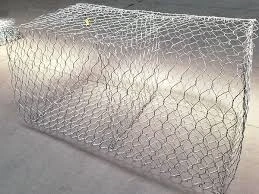-
 Phone:
Phone: -
 Email:
Email:

rock fall netting
Rock Fall Netting A Vital Safety Measure in Civil Engineering
Rock falls are a common hazard in mountain regions and steep terrains, posing significant risks to infrastructure, roadways, and human life. The consequences of rock falls can be catastrophic, leading to injuries, fatalities, and substantial economic loss. To mitigate these risks, engineers and environmental scientists have developed various techniques, one of which is rock fall netting. This invaluable safety measure has gained prominence in civil engineering as a practical solution for stabilizing rock faces and preventing falling debris.
Rock fall netting involves the installation of protective netting systems on steep slopes or rocky outcrops that are prone to rock falls. These systems are designed to catch and contain loose rocks, preventing them from rolling down into populated areas, roads, or other critical infrastructure. The primary goal of rock fall netting is to ensure the safety of people and property by effectively controlling the movement of rocks.
One of the key advantages of rock fall netting is its versatility
. It can be employed in various environments, from mountain highways to quarry sites, making it an essential tool for construction and maintenance in rocky terrains. The netting can be tailored to cater to the specific geological conditions and the level of risk associated with different sites. Moreover, modern netting systems are designed to be durable and resilient, able to withstand extreme weather conditions and the impact of falling rocks.The installation of rock fall netting is a complex process that often requires careful planning and engineering. Before installation, a thorough geological assessment is conducted to identify potential rock fall hazards and determine the appropriate type of netting needed. Factors such as slope angle, rock type, and anticipated rock size and weight are taken into consideration. Engineers also assess the area for existing vegetation and soil conditions to ensure that the netting system integrates well with the environment.
rock fall netting

Once the assessment is complete, the installation process begins. This typically involves anchoring the netting to the rock face using specialized fasteners and systems that can secure the net even under the force of falling rocks. The netting itself is made from high-tensile-strength materials, ensuring that it can handle significant loads without tearing or failing. In some cases, additional support structures, such as mesh panels or reinforcing cables, may be added to enhance the system's effectiveness.
Once in place, rock fall netting serves a crucial role in ongoing maintenance and safety. Regular inspections are necessary to ensure the integrity of the netting system, especially after extreme weather events, such as heavy storms or earthquakes, which can dislodge rocks or weaken support structures. Any signs of wear and tear or areas of concern must be addressed promptly to maintain the system's reliability.
While rock fall netting is highly effective, it is not a standalone solution. It is often part of a broader rock fall mitigation strategy that includes methods such as rock scaling, slope stabilization, and controlled blasting to remove loose rocks beforehand. Together, these strategies work to create safer environments in areas exposed to rock fall hazards.
In conclusion, rock fall netting is a critical component in the field of civil engineering, especially in regions susceptible to geological hazards. By providing a robust solution to catch and contain falling rocks, it mitigates risks to human life and property, allowing for continued use of roads and infrastructure in mountainous and rugged terrains. As advancements in materials and engineering techniques continue to evolve, the efficiency and effectiveness of rock fall netting systems will only improve, offering enhanced safety for communities worldwide. Ultimately, investing in such protective measures is not just a technical necessity; it represents a commitment to safeguarding human life and sustaining the environment we inhabit.
-
Wire Mesh for Every Need: A Practical SolutionNewsJul.25,2025
-
Steel Fences: Durable, Secure, and Stylish OptionsNewsJul.25,2025
-
Roll Top Fencing: A Smart Solution for Safety and SecurityNewsJul.25,2025
-
Cattle Farm Fencing Solutions for Maximum SecurityNewsJul.25,2025
-
Affordable Iron Binding Wire SolutionsNewsJul.25,2025
-
Affordable Galvanized Wire SolutionsNewsJul.25,2025
-
Wire Hanger Recycling IdeasNewsJul.25,2025








